MARKETING
5 Social Media Tips Every Small Business Needs [+ Free Tools]
![5 Social Media Tips Every Small Business Needs [+ Free Tools] 5 Social Media Tips Every Small Business Needs [+ Free Tools]](https://articles.entireweb.com/wp-content/uploads/2022/06/5-Social-Media-Tips-Every-Small-Business-Needs-Free.jpgkeepProtocol.jpeg)
POV: You’re new in the market and you’re wondering just how your small business can stand out among the millions of brands currently on social media.
In this article, you’ll learn how to use social media for small businesses and which (free) software you should have in your toolbox.
Why social media is important for small businesses?
The biggest benefit to using social media is that it’s a low-cost strategy to increase your brand awareness.
While you, of course, have to invest time and resources in building out your content, you can create high-quality content with a reliable phone and a few tools at your disposal.
In addition, with social media, you have the potential to reach your target audience for a fraction of what you would pay in targeted ads.
😍😍😍😍
— Kendall Miles (@TheKendallMiles) September 20, 2021
For instance, you may spend $100 developing creative assets for a video that ends up reaching 100,000 users. To reach those same users with an ad, you will likely have to invest much more money.
In addition, social media allows you to:
- Drive more traffic to your website and generate leads.
- Promote products and services.
- Build a community.
- Connect with and learn from your target audience.
When you get down to it, the way you use social media as a small business isn’t much different from how you’d use it as a mid to large-size business. In both cases, you’re sharing, engaging, monitoring, and optimizing.
The key difference is that a small business is likely focused on growth while an established brand may prioritize expansion.
Social Media Tips for Small Business
1. Be consistent.
The best thing you can do as a small business when starting out on social media is to be consistent.
Too often, brands get discouraged if they don’t see results within a few weeks. The truth is social media growth can be slow but like most things, if you remain consistent, you will generate results.
This means posting high-quality content on a regular basis (at least once a week). You do this for a few reasons.
@thecraftghan Acrylic baby milestone signs in ‘Linen’ #acrylicsignstoronto #makeitwithme #tiktoktoronto #shopsmall #smallbiz #cricutprojects #babymilestones ♬ TO THE MOON – Jnr Choi & Sam Tompkins
The first is that when a user does land on your profile, you want them to get a clear picture of your brand. If you have little to no content, users will quickly lose interest and leave. The same is true for scattered posts.
Social media is an opportunity to tell a story. When you prioritize consistency and cohesiveness, users will know what to expect from your page, what your voice is, and what you offer. And that’s how you’ll attract your target audience.
2. Diversify your content.
On social media, there’s so much room to be creative and experiment. Too often, brands find one strategy that works and stick to that.
While there’s a lot of truth to the saying “If it ain’t broke, don’t fix it,” social media is constantly evolving. What worked yesterday may not work today, as these platforms implement new features and user behavior changes.
With this in mind, play around with content formats whenever possible. For instance, on TikTok, you can only post videos. However, on Facebook, you have the option of going live, posting images, conducting polls, and more.
Here are some formats you should leverage:
- Photos
- Videos
- Illustrations
- Stop-motion
- Live streams
- Polls
With content, the limit truly does not exist.
Our social media report revealed that small businesses get the best ROI from creating educational and relatable content. Meanwhile, mid-size and large businesses report better results with funny and interactive content.
This data point makes sense for many reasons. Larger brands have likely already built a strong following and know what their audience likes. That’s why they’re able to do interactive polls and be creative with their content.
Small businesses, on the other hand, still have a lot to prove. They want to add value to their audience and grow a following, and the easiest way to do that? Make content that educates and/or resonates.
This isn’t to say that small businesses should stick to these two types of content. In fact, they should experiment with all content to narrow down what their audience likes. However, this can serve as a strong starting point.
Here are some ideas to get you started:
- How-tos
- Customer spotlights
- Industry facts and updates
- Behind the scenes
- Trends (viral sounds and dances)
- Product highlights
- Q&As
3. Focus on quality instead of quantity.
This applies not only to the content you post but also to which platforms you post.
From a content perspective, while it is encouraged that you post often on social media, there’s a caveat. Everything you post should add value.
If it doesn’t meet that criteria, consider another strategy, such as reposting brand-related content from a non-competitor or sharing user-generated content (UGC).
In fact, 33% of small businesses surveyed (those with 1-25 employees) report getting the best ROI on social media from leveraging UGC.
Now onto the platforms.
If you’re a small business with limited time and resources, you may not able to manage an account on every single social platform. And that’s OK.
It’s much more valuable to focus on one to three platforms that have your target audience’s demographics and go from there.
According to our 2022 social media marketing research, small businesses are prioritizing Facebook and YouTube in 2022 (even though they report that Facebook and Instagram generate the highest quality leads).
However, if your audience is Gen-Z, you may choose to focus your efforts on TikTok and grow your audience there.
4. Find trends.
This is another piece of advice that relates to both content and platform.
Our research found that many small businesses are exploring live audio chat rooms and short-form videos for the first time – two of the biggest trends of the last two years.
Yes, trying out a new platform demands a lot more than trying out a new format or type of content.
![5 Social Media Tips Every Small Business Needs [+ Free Tools] social-media-trends-bar-graph (15)](https://articles.entireweb.com/wp-content/uploads/2022/06/1656440504_343_5-Social-Media-Tips-Every-Small-Business-Needs-Free.png)
For a while, brands were wary of TikTok. They saw it as a non-serious platform meant to entertain Gen-Z. Now, brands realize that it’s another highly valuable network that can broaden their reach and increase their brand awareness.
This is all to say that you don’t have to jump on every trend when it first appears, that’s not the recommendation here. Instead, you want to monitor them and their evolution. Because while some trends die off, others turn into staples.
Social Media Tools for Small Business
1. Google Analytics for Analytics
When asked about the tools they use to track social media metrics, 75% of small businesses said Google Analytics.

The platform allows you to track the impact of your social media accounts on your traffic, specifically:
- How many visitors are coming from social media
- How long their sessions are
- Which landing pages are getting shared most on social media
- Conversion rates from social media compared to other channels
- Which social campaigns are generating traffic and conversions
There are both free and paid versions of the app – the free version offers so many features that as a small business, there is little need for the upgrade.
2. Canva for Graphic Design
Don’t have money to hire a graphic designer? Don’t fret – Canva to the rescue.

This graphic design platform offers thousands of free social media templates that you can use to build a consistent visual identity.
You can also find stock images and videos that are free to use for commercial and non-commercial use.
Note: While Canva is incredible for creating branded templates, avoid using it for logos, as you may struggle to find unique designs.
3. Asana for Content Planning
Asana is a project management tool that makes social media planning easy.
With the free version, you can:
- Integrate it with 100+ tools, including Slack, Google Calendar, Adobe, Canva, MailChimp.
- Create unlimited projects and tasks.
- Tag social platforms, content, and more for easy sorting.
- Have up to 15 users to facilitate collaboration.
![5 Social Media Tips Every Small Business Needs [+ Free Tools] 1656440504 138 5 Social Media Tips Every Small Business Needs Free](https://articles.entireweb.com/wp-content/uploads/2022/06/1656440504_138_5-Social-Media-Tips-Every-Small-Business-Needs-Free.png)
With all of these features, you can map out your content for the month and create tasks to track your progress. This makes scheduling a piece of cake and allows others to get a clear understanding of your plans.
Growing your social media presence as a small business is an exciting time. Use these tools to get you on track and remember, slow and steady always wins the race.
MARKETING
A Recap of Everything Marketers & Advertisers Need to Know

When rumors started swirling about Twitter changing its name to X, I couldn’t believe it at first. But then, in July 2023, as I searched for my favorite blue icon on the phone, I found a black icon instead. It had actually happened!
MARKETING
The key to correcting the C-suite trust deficit

Take a moment to search “CMO tenure” and you’ll find a wide variety of content discussing the short tenure of CMOs and how it’s among the shortest of roles in the C-suite. If you dive deeper, you’ll find that CEOs don’t seem to trust CMOs.
Boathouse’s CMO Insights study (registration required) noted several sobering conclusions:
- 34% of CEOs have great confidence in their CMOs.
- 32% of CEOs trust their CMOs.
- 56% of CEOs believe their CMO supports their long-term vision.
- And only 10% of CEOs believe their CMO puts the CEO’s needs before their own.
If these statistics also apply to the CMO’s entire organization, then it’s clear we have a trust problem with marketing leadership.
If you haven’t read Patrick Lencioni’s “The Five Dysfunctions of a Team,” I consider it required reading for anyone in any leadership role. In his book, Lencioni builds a pyramid of dysfunctions that need to be addressed for a team to succeed. The foundational dysfunction — with which one cannot build a successful team — is “absence of trust.” We see it at scale with marketing organizations today.
Introducing objectivity through data
In “Hamlet,” Shakespeare writes, “There is nothing either good or bad, but thinking makes it so.” Each organization that makes up a company looks at the company from a different perspective. What marketing sees as positive, finance may see as negative. But who’s right? No one.
Usually, there is no objectivity because leadership comes up with an idea and we execute it. It’s like the fashion proverb “Beauty is in the eye of the beholder.” Unfortunately, we’re going to struggle to run a profitable organization if it’s run like a fashion show.
Therefore, we need to introduce objectivity to how we work. Leadership needs to come together to agree on goals that align with the goals of the broader organization. One element of this conversation should be an acknowledgment that this is turning a ship.
Often leaders — especially those without marketing backgrounds — are likely to expect instant gratification. It’s going to take time to turn the ship and you and your team would do well to set reasonable expectations right away.
Dig deeper: KPIs that connect: 5 metrics for marketing, sales and product alignment
Aligning goals and metrics across the organization
With goals in hand, we need to assign metrics to their progress and agree on the source(s) of truth. Once these objective measures are in place, perspective doesn’t matter. 2 + 2 = 4 regardless of whether you’re in HR or accounting.
Every public road has a speed limit and whether you’re in compliance with it has nothing to do with your perspective. If you’re above it, you’re wrong and subject to penalties. Referring to the fashion example, it’s not a fashion show where some people like a dress and others don’t.
By using data to objectively measure marketing’s progress within the organization and having the rest of the leadership buy into the strategy, we build trust through objectivity. Maybe the CEO would not have chosen the campaign the marketing team chose.
But if it was agreed that a >1 ROAS is how we measure a successful campaign, it can’t be argued that the campaign was unsuccessful if the ROAS was >1. In this example, the campaign was an objective success even if the CEO’s subjective opinion was negative.
Data-driven campaign planning
Within the marketing organization, campaigns should always be developed with measurement top of mind. Through analysis, we can determine what channels, creative, audiences and tactics will be most successful for a given campaign.
Being able to tell the leadership team that campaigns are chosen based on their ability to deliver measured results across metrics aligned to cross-departmental goals is a powerful message. It further builds trust and confidence that marketing isn’t run based on the CMO’s subjective opinions or gut decisions. Rather, it’s a collaborative, data-driven process.
For this to be successful, though, it can’t just be for show, where we make a gut decision and direct an analyst to go find data to back up our approach. This would be analytics theater, which is a perversion of the data. Instead, tell the analyst what you think you want to do and ask them to assess it.
For the rest of the organization’s leadership, ask questions when the marketing team presents a campaign. Find out how they came up with the strategy and expect to hear a lot about data — especially the metrics you all agreed would support the company’s overarching goals.
Dig deeper: 5 failure points of a marketing measurement plan — and how to fix them
Data literacy: Building credibility through transparency
Building trust doesn’t happen overnight, but a sustained practice of using data to drive marketing leadership’s decisions will build trust if the metrics ladder up to the organizational goals and all of leadership is bought into the measurement plan.
Over time, this trust will translate into longer tenure and more successful teams through building the infrastructure needed to tackle Lencioni’s five dysfunctions.
Opinions expressed in this article are those of the guest author and not necessarily MarTech. Staff authors are listed here.
MARKETING
How Tagging Strategies Transform Marketing Campaigns


As a marketer, I understand how today’s marketing campaigns face fierce competition. With so much content and ads competing for eyeballs, creating campaigns that stand out is no easy task.
That’s where strategies like tagging come in.
It helps you categorize and optimize your marketing efforts. It also helps your campaigns cut through the noise and reach the right audience.
To help you out, I’ve compiled nine ways brands use a tagging strategy to create an impactful marketing campaign.
Let’s get to it.
How Brands Use a Tagging Strategy
Tagging involves using keywords or labels to categorize and organize content, products, or customer data. You attach tags to specific items or information to make searching, sorting, and analyzing data easier.
There are various types of tags, including meta tags, analytics tags, image tags, hashtags, blog tags, and more.
So, how do brands use a tagging strategy to make their marketing campaigns stand out?
Improve Social Media Engagement
With over 5 billion users, social media provides an easy way to connect with your audience, build relationships, and promote your offerings.
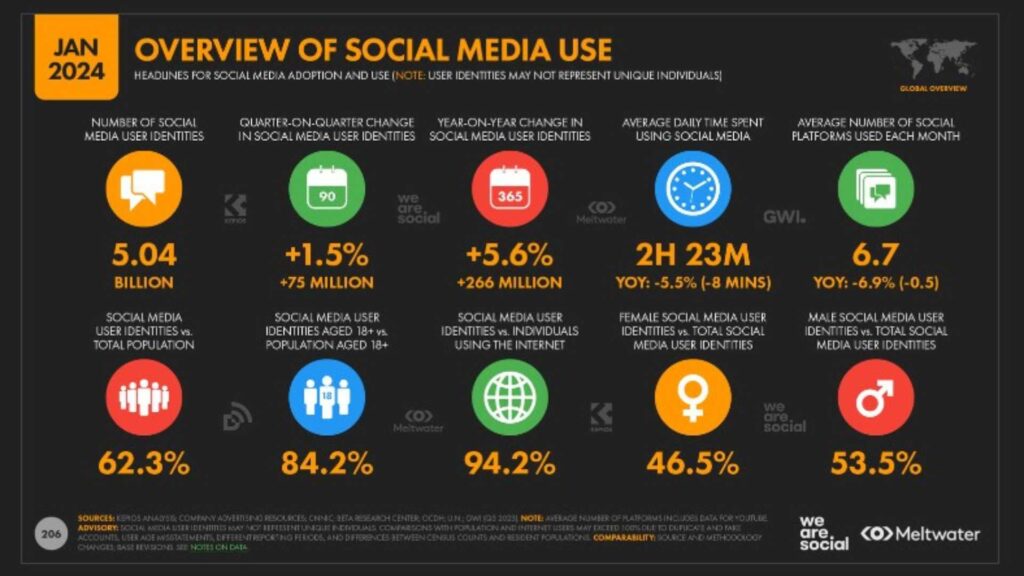

Use a tagging strategy to boost social media interactions. Consistently use hashtags that align with current trends and topics. This encourages people to interact with your content and boosts content visibility.
You can also use tags to monitor brand mentions of your products or your industry. This allows you to engage with your audience promptly.
Consider virtual social media assistants to streamline your tagging strategy. These AI-driven tools can suggest relevant hashtags, track mentions, and automate responses. Implementing them can save time and resources while ensuring consistent engagement across your socials.
Build a Personal Brand on LinkedIn
LinkedIn is the world’s largest professional networking platform, with over 1 billion members across 200 nations. It offers excellent opportunities for individuals and businesses to build and nurture their brands.
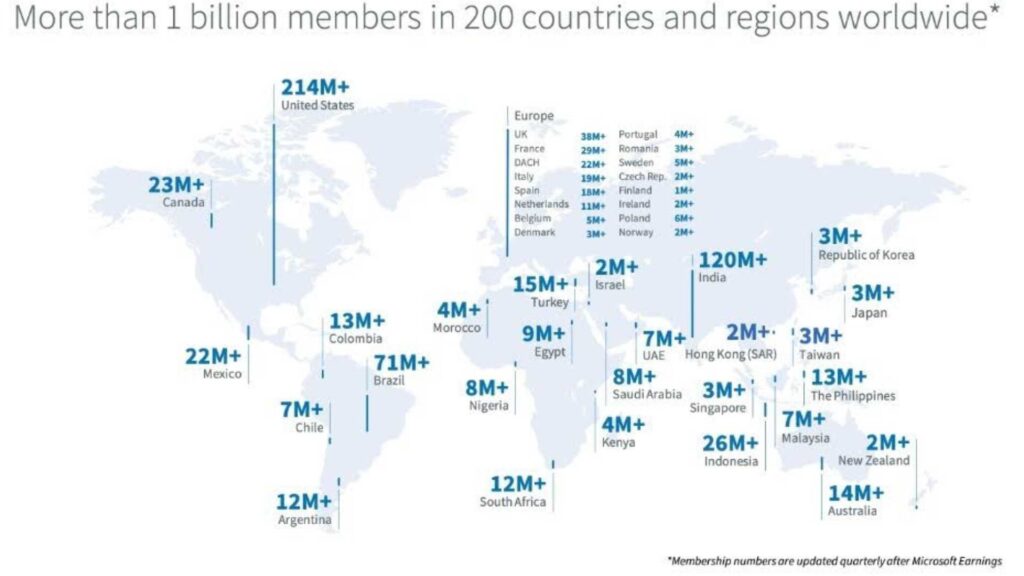

However, simply creating a professional profile isn’t enough to build a personal brand on LinkedIn.
Use various tags to increase your visibility, establish thought leadership, showcase expertise, and attract the right connections. For instance, use skill tags to showcase your expertise and industry tags to attract connections and opportunities within your industry. Use certification tags to help showcase your expertise and credibility to potential employers or clients.
Facilitate Customer Segmentation and Personalization
Personalization matters—more so in today’s data-driven world. In fact, 65% of consumers expect your brand to adapt to their changing preferences and needs.
To meet this expectation, consider using a tagging strategy.
Segment your customers based on shared characteristics, such as demographics, interests, purchase history, cart abandonment, and behavior.
Here’s a summary of the steps to customer segmentation.
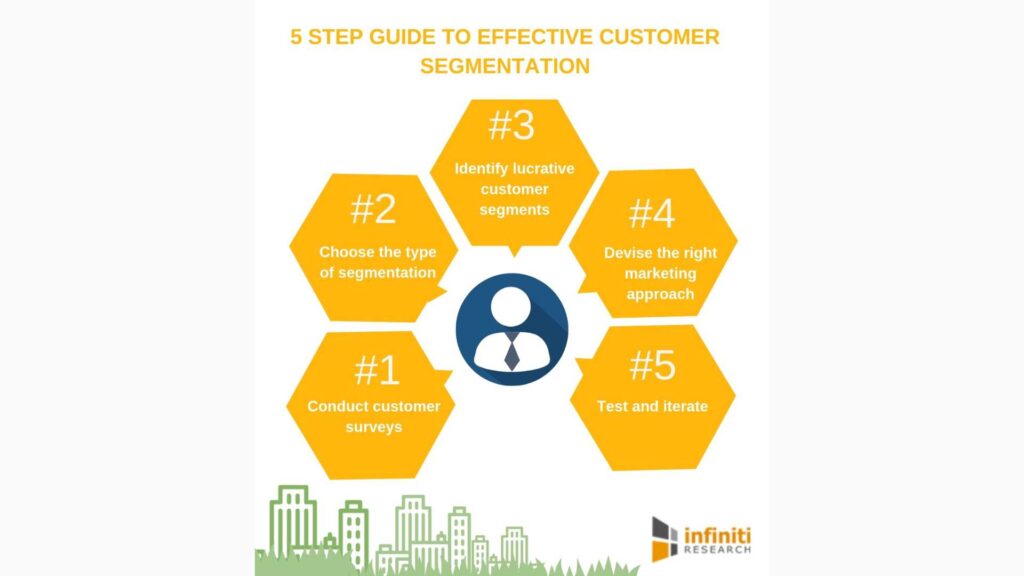

With your customer segments ready, use tags to tailor your marketing messages and offerings to specific segments. Imagine sending targeted email campaigns based on what your customers need. That’s the power of segmentation and tagging in action!
Enhance SEO and Content Discoverability
Tagging content can have a profound impact on search engine optimization (SEO) and content discoverability. When users search for specific topics or products, well-tagged content is more likely to appear in search results, driving organic traffic to your website.
Additionally, tags can help you analyze the most popular topics with your readers. Then, the results of this analysis can help you adjust your content strategies accordingly.
And get this— certain AI tools can help analyze your content and suggest relevant tags and keywords. Using these tools in addition to a tagging strategy can help optimize your SEO strategies and boost content discoverability.
Partner with the Right Influencers
Influencer marketing has become a go-to marketing approach for modern brands. Recent stats show that 85% of marketers and business owners believe influencer marketing is an effective marketing strategy.
But how do you find the perfect influencer for your campaign?
Utilize tags to identify influencers who are relevant to your niche. Beyond this, find influencers who align with your brand values and target audience.
Additionally, look for influencers who use hashtags that are relevant to your campaigns. For instance, fashion influencer Chiara Ferragni uses #adv (advertising) and #ghd (good hair day) hashtags in this campaign.


Monitor industry-specific hashtags and mentions to discover influential voices and build profitable relationships with them.
Track Hashtag Performance
Tracking your hashtag performance helps you understand your campaigns’ engagement, reach, and effectiveness.
To achieve this goal, assign special hashtags to each marketing project. This helps you see which hashtags generate the most engagement and reach, enabling you to refine your tagging strategy.
Here’s an example of a hashtag performance report for the #SuperBowl2024.
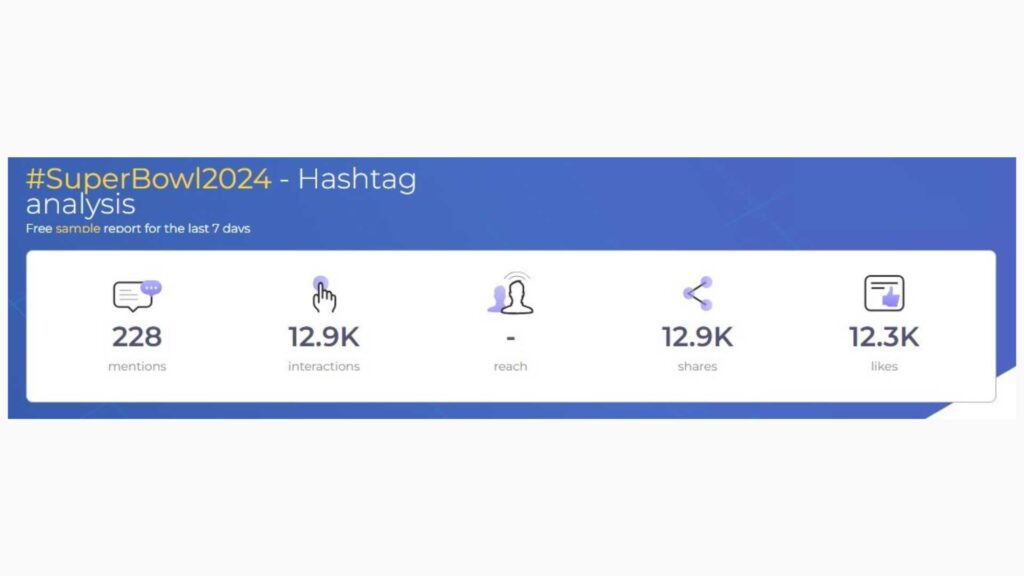

This curated list of hashtag generators by Attrock discusses the top tools for your consideration. You can analyze each and choose the one that best fits your needs.
Categorize Content Accordingly
The human attention span is shrinking. The last thing you want is for your audience to have difficulty in finding or navigating your content, get frustrated, and bounce.
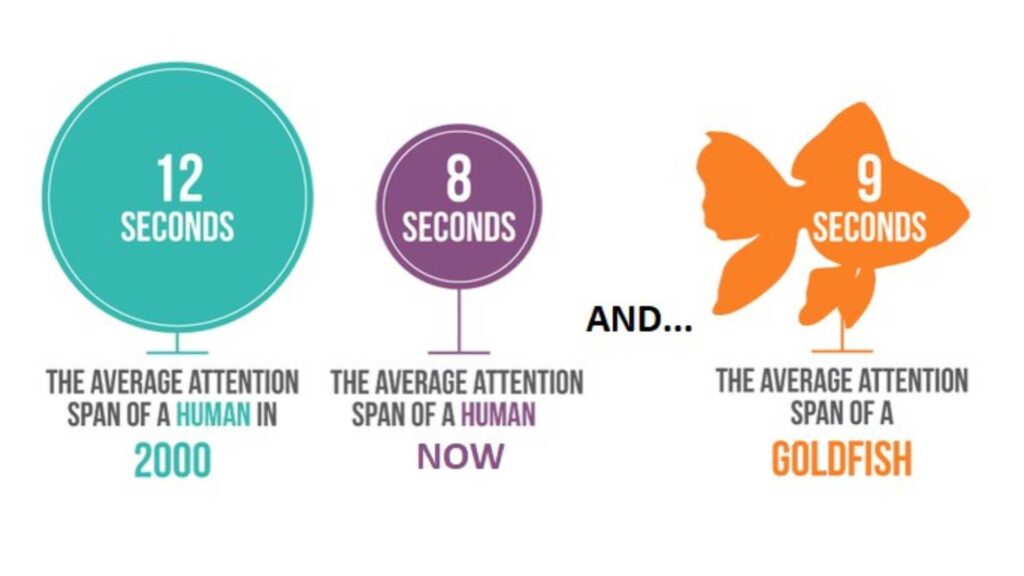

Untagged content can be difficult to navigate and manage. As any marketer knows, content is important in digital marketing campaigns.
To categorize your content, identify the main categories by topics, themes, campaigns, target audiences, or product lines. Then, assign relevant tags based on the categories you’ve identified. After that, implement a consistent tagging strategy for existing and new content.
Organizing your content using tags can also help streamline your content management workflow. Most importantly, readers can easily find the content they’re looking for, thereby boosting overall user experience, engagement, and conversions.
Boost Your Email Marketing Strategy
Email marketing remains a powerful marketing tool in today’s digital world. It’s also another area where brands use a tagging strategy to directly reach their target audience.
Use tags to segment your email list and personalize your marketing messages. Then, you can send targeted emails based on factors like purchase history, interests, and demographics.
Personalization can significantly improve open rates, CTRs, and overall engagement and conversion rates. It’s a simple yet impactful strategy to make your email marketing strategy more effective.
Plus, you can use tags to track how well your emails perform with each group. This helps you understand what content resonates best with your audience and provides insight on how to improve your emails going forward.
Enhance Analytics and Reporting
Every marketer appreciates the immense value of data. For brands using tagging strategies, tags are powerful tools for gathering valuable data.
Analyze how users interact with your tagged content. See which tags generate the most clicks, shares, conversions, and other forms of engagement. Gain insight into audience preferences and campaign effectiveness.
This granular data about your marketing efforts allow you to make data-driven decisions, allocate resources effectively, and refine your marketing strategies.
Final Thoughts
There isn’t a single correct way for brands to use a tagging strategy in marketing. You can use a tagging strategy however you see fit. However, the bottom line is that this strategy offers you a simple yet powerful way to create attention-grabbing and unique marketing campaigns.
Fortunately, tagging strategies are useful across various marketing initiatives, from social media and email marketing to SEO and more.
So, if you’re ready to elevate your marketing campaign, build a strong brand presence, and stand out among the competition, consider employing effective tagging strategies today.
-
SEARCHENGINES7 days ago
Daily Search Forum Recap: April 29, 2024
-
SEARCHENGINES6 days ago
Daily Search Forum Recap: April 30, 2024
-

 MARKETING6 days ago
MARKETING6 days agoHow To Develop a Great Creative Brief and Get On-Target Content
-

 SEO7 days ago
SEO7 days agoGoogle’s John Mueller On Website Recovery After Core Updates
-

 WORDPRESS6 days ago
WORDPRESS6 days ago13 Best Fun WordPress Plugins You’re Missing Out On
-

 SEO5 days ago
SEO5 days agoWhy Big Companies Make Bad Content
-

 SEO5 days ago
SEO5 days agoHow To Drive Pipeline With A Silo-Free Strategy
-

 SEO6 days ago
SEO6 days agoOpenAI To Show Content & Links In Response To Queries


![5 Social Media Tips Every Small Business Needs [+ Free Tools] free social media content calendar](https://articles.entireweb.com/wp-content/uploads/2022/03/1648074116_145_Best-Social-Media-Management-Tools.png)
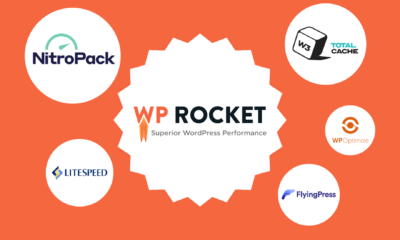













You must be logged in to post a comment Login